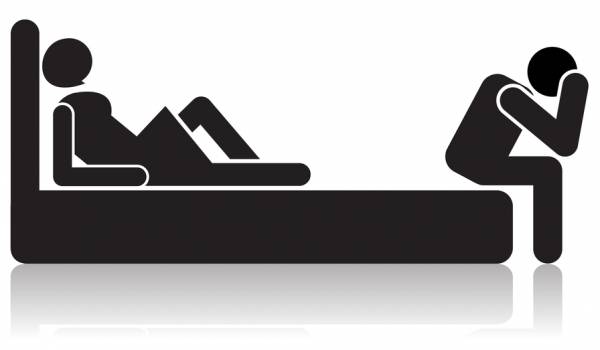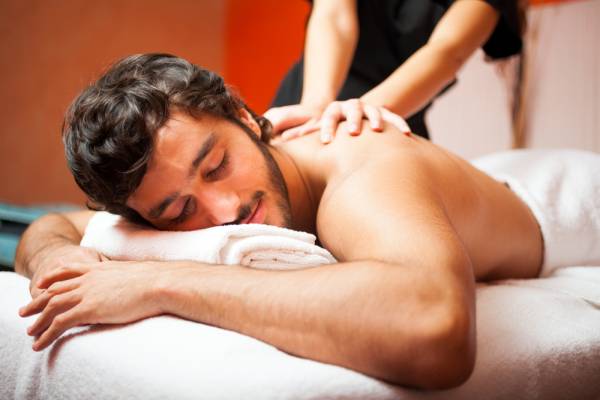High cortisol levels can cause disruption in not only the male libido but can also cause erectile dysfunction. Let’s take a look at what cortisol actually is in regard to endocrinology, how you wind up with high cortisol levels, and how you can ensure that you maintain normal levels, so as to not affect your libido or erection.
What is Cortisol?
Cortisol is a type of glucocorticoid that is released by the zona fasciculate of the adrenal cortex. Cortisol functions to increase the breakdown of protein and fat and increase their conversion to forms that can be used as energy sources by the body.
Overtraining or too many high-intensity workouts per week can lead to increased levels of cortisol. Overtraining can be a releasing factor that stimulates the anterior pituitary gland to release adrenocorticotropic hormone (ACTH), which induces the adrenal cortex to discharge cortisol.
Prolonged elevated levels of cortisol eventually lead to excessive protein breakdown, which leads to muscle breakdown (and no one wants that). Another unpleasant side effect from prolonged elevated levels of cortisol is that it blocks testosterone’s effect on the body.
The Relationship Between Testosterone and Cortisol
The International Journal of Sports Medicine did a study on the relationship between cortisol and testosterone in professional cyclists. The purpose of the study was to examine if the acute hormonal response to a bout of exercise and the resting levels of testosterone, luteinizing hormone, and cortisol were correlated to performance in cyclists.
Ten professional cyclists participated in the study and measurements took place before and after a defined period of training. Maximum workload (Pmax) was determined on a cycle-ergometer with slowly increasing protocol.
The results demonstrated a decrease in testosterone levels and an increase in cortisol levels. This study would suggest there is a negative correlation between testosterone and cortisol – meaning if one goes up, the other will go down. So, if there is an increase in testosterone, cortisol will drop, but if there is an increase in cortisol, testosterone will drop. It’s important to mention, though, that in this study the increase in cortisol did not automatically lead to a decrease in performance or a state of overtraining.
Cortisol and the Male Libido
So now that we know what cortisol is and the type of relationship it shares with testosterone, we can bring the two together in how cortisol affects the male libido. According to the World Journal of Men’s Health, low testosterone causes diminished sexual desire and erectile quality, particularly in nocturnal and morning erections. Low testosterone can also cause delayed ejaculation and reduced semen volume. Among the several sexual symptoms of low testosterone, erectile dysfunction gains the most attention and has been considered to be the most associated with serum testosterone levels.

Where and how testosterone acts in the erection process remains to be elucidated in humans. It has been previously reported that the international index of erectile function score increased when serum testosterone increased. The fundamental importance of testosterone at most levels of the pathways that serve penile erection, from the cortex through the midbrain and spinal cord to the smooth muscle cells and endothelial function, gives testosterone consideration in the management of erectile dysfunction and sexual dysfunction in males.
How to Control Your Cortisol Levels
The burning question for male athletes is how do you control your cortisol levels to ensure your testosterone stays within safe levels so you can continue to have normal sexual function and yet also be able to work out as hard and as often as you have planned. Because, of course, your body is going to release cortisol when you workout. It’s a natural response when you put the body under stress.
Supplementation
Vitamin C – This antioxidant can lower cortisol levels post exercise. The Journal of Sports Medicine and Physical Fitness found that cortisol significantly declined when vitamin C was supplemented in active males. Dosage recommendations are between 500 mg to 1,000 mg per day.
Phosphatidylserine – This derivative of soybeans has been shown to blunt cortisol response due to exercise stress. According to the Journal of International Society of Sports Nutrition, cortisol levels were lower following a supplementation regime of 600 mg for ten days. Dosage recommendations are between 600 mg to 800 mg per day, but if there are instructions on the bottle follow those instructions.
Glutamine – Supplementing this can help maintain nitrogen balance in muscles by sparing amino acids needed for muscle building. This then prevents cortisol levels from rising. Recommended dosage is 5 grams post workout or prior to sleep.
Proper Programming
There is such a thing as too much of a good thing. To keep cortisol levels lower than testosterone levels you need to have proper and effective programming. For example, if your CrossFit gym programs only metcons and long-duration workouts without adding days dedicated to strength, you may be in a position for high cortisol levels.
The same goes for those of you who train for marathons and triathlons. If long duration running, biking, and swimming are your only modes of exercise, without adding in days for strength building, you are in danger of high cortisol levels and low testosterone.
The important thing to get out of this is that you need to be well rounded and make sure you do not over stress the body to the point that your body begins to breakdown muscle tissue (which is what cortisol does, remember?). High intensity and long duration workouts are great, but in moderation. You need your rest days and you need days where you practice your lifts to build strength.

Lower Your Everyday Stress Level
Each of us has something in our life that causes stress. I know men often feel like it’s their job to handle the stresses of jobs, school, and family, while also trying to keep up with their health, fitness, and diet. It’s important for men to find a way to de-stress.
Massage therapy can be a great way to reduce stress. If you don’t like people touching you, a yin yoga class or meditation can do the trick. Can’t sit still? A new hobby that you enjoy (besides working out) can be a great way to create a stress-free outlet. Find a way to do something – that has nothing to do with working out or your job – at least once a week so you can unload a bit of stress.
Conclusion
Healthy testosterone levels are the gateway to good sexual health. Cortisol will always release inside your body when you exercise, but you can take the necessary steps to ensure your hormones are within normal limits.
If you feel you have done all you can and still have higher than normal cortisol levels, you need to speak to your primary care physician for other possible causes. And whenever you start taking a new supplement, always inform your primary care manager.
References:
1. Starks, M. et. al. “The Effects of Phosphatidyserine on Endocrine Response to Moderate Intensity Exercise.” Journal of International Society of Sports Nutrition (2008): ePub, accessed June 9, 2014, DOI 10.1186/1550-2783-5-11
2. Babaei, P. et. al. “Effect of Vitamin C Supplementation on Lipid Peroxidation, Muscle Damage, and Inflammation After 30-Min Exercise at 75% VO2Max.” Journal of Sports Medicine and Physical Fitness (2008): 217-224, accessed June 9, 2014, PMID 18427418
3. Tsujimura, Akira. “The Relationship Between Testosterone Deficiency and Men’s Health.” The World Journal of Men’s Health (2013): 126-135, accessed June 9, 2013, DOI 10.5534/wjmh.2013.31.2.126
4. Hoogeven, AR et. al. “Relationship Between Testosterone, Cortisol, and Performance in Professional Cyclists.” International Journal of Sports Medicine (1996): 423-428, accessed June 9, 2014, PMID 8884416
5. Lovell, M., BA. “Adrenal Fatigue and Overtraining in the Athlete: A Nutritional Perspective of Pathology and Treatment of Overtraining Syndrome: An Exhaustive Review.” The Nutrition Practitioner (2010): 4-5, accessed June 9, 2014, www.chelm.com/nutritionpractitioner
6. McArdle, WD. et. al. Exercise Physiology: Energy, Nutrition, and Human Performance, Sixth Edition. (New York: Lippincott Williams and Wilkins, 2007), 584-585
7. Tate, P., Seely’s Principles of Anatomy and Physiology. (New York: McGraw Hill Companies, 2012), 450-451
Photos courtesy of Shutterstock.






